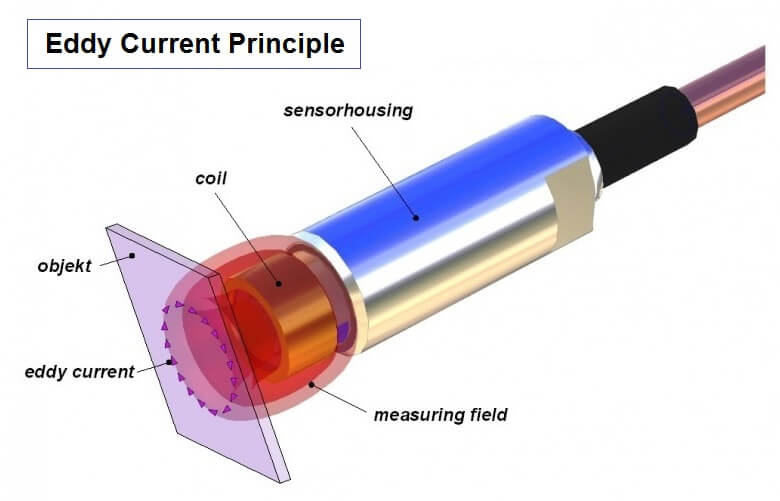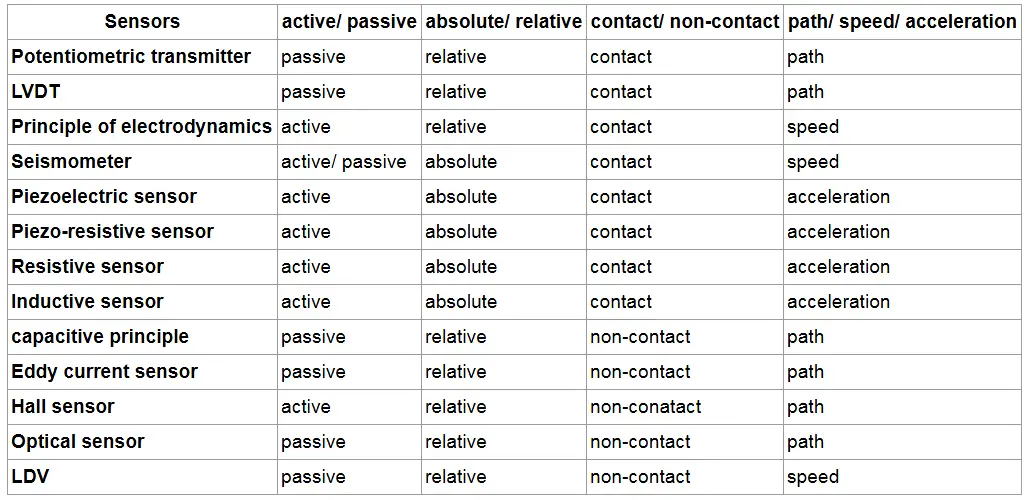Types of Non – Contact Vibration Measurement
Path Measurement
- Capacitance
- Eddy Current
- Hall Effect
- Optical
Speed Measurement
- Laser-Doppler vibrometer
- Seismometer
Acceleration measurement
Path measurement
Capacitive Principle
The capacitive principle can be applied to non-contact vibration measurement, if the vibrating object or a relevant part of it is useable as a plate of a capacitor.
In order to do measurements, a second plate is needed. Now the whole setup works like any common capacitor. The variation of the distance of the two plates is proportional to the capacity.
An AC supply is connected to the capacitor. Depending on the distance between the plates, a specific amplitude can be recognized by the sensor which can be used for further processing.
The measuring stroke reaches from several μm μm to mm with a resolution of some nm. The band of frequencies lies between 0 and 6 kHz.
However this non-contact method is not feasible for application in high quantities and must be adapted to the individual case.
Eddy current sensor
In eddy current sensors, the displacement measurement of vibrations is limited to metallic objects or at least objects with a metallic surface.
The sensor consists of a coil which is connected to an AC supply. This configuration develops an electromagnetic field that in turn causes eddy currents within the metallic object.
These eddy currents interfere with the electromagnetic field and result in a measureable dissipation. Possible path measurements are between 0.5 and 80 mm.
Here the resolution lies somewhere between nm and μm μm . The band of frequency ranges between 1 Hz and 100 kHz

Hall sensor
The Hall sensor uses the Hall-effect for the non-contact path measurement. To that end a small permanent magnet has to be fixed on the measured object.
As soon as vibrations occur, an electric signal can be detected through measuring the effect of the Lorentz force.
The output signal is proportional to the covered path. However the non-linear characteristic curve and the high sensibility to environmental impacts results in a limited usability.
Optical sensor
Optical sensors use lasers to detect changes in distance. In addition to a laser, beam splitters, a reflector, a Bragg cell and a photo detector are necessary to carry out measurements.
These devices are needed to obtain two beams, a measuring beam and a reference beam. The measuring beam is focused on the vibrating object. Its reflection merges with the reference beam and starts to interfere.
The generated interference pattern can be decoded by the photo detector. The range of an optical sensor lies within few millimetres with a resolution in the region of nanometres.
Speed measurement
Laser-Doppler vibrometer
The Laser-Doppler vibrometer (LDV) uses the Doppler frequency shift for non-contact speed measurement.
In principle, it consists of a laser, beam splitters, a reflector, a Bragg cell and a photo detector. The coherent laser light is split into a measuring beam and the reference beam by means of polarisation.
The measuring beam is projected onto the vibrating object and is reflected on its surface. The reference beam is used to be send through a Bragg cell for a frequency shift.
This frequency shift allows the detection of motion direction later. The interference of both beams leads to a frequency modulated signal. Various demodulation methods are able to translate the signal into path or speed information.
Commercial LDVs have a frequency range between 0 Hz and 30 MHz and can follow vibration speeds from 100 nm/s up to 20 m/s.

Acceleration measurement
So far there is no way known to gain acceleration data directly. It is possible to receive this data by derivation from the speed measurement.
However measurement noise has a great effect on the quality of the derived data. Thus it is not always possible or useful to do so.
Vibration Sensors Characteristics
